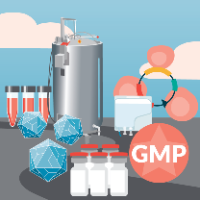Gammaretroviral and lentiviral vector manufacture: brief overview
Cell & Gene Therapy Insights 2021; 7(3), 345–354
10.18609/cgti.2021.040
Viral vectors are used as efficient gene delivery vehicles in gene and cell therapy. Viral vectors can be broadly divided into integrating and non-integrating vector based on their ability to integrate the gene of interest (GOI) into a host cell genome. Appropriate selection of vector system is based on the application. Manufacture of viral vectors requires vector backbone components to be combined with the therapeutic gene of interest (GOI); this can be achieved primarily by one of the following three ways:
1. Transiently by multiple plasmid transfection of the transfer vector containing the gene of interest along with the packaging and envelope plasmids simultaneously into an appropriate cell line such as 293T cells;
2. Transiently by single plasmid transfection of a transfer vector containing the gene of interest (GOI) into an appropriate packaging cell line expressing the packaging and envelope genes;
3. Stably from a vector producer cell line. Scale, yield, purity, and quality are critical considerations in viral vector manufacture and upstream and downstream process optimization is essential for scalable manufacture of quality viral vector for clinical applications.
Both gammaretroviral vectors (GRVV) and lentiviral vectors (LVV) originate from retroviruses and are widely used for genetic modification of CAR-T cells. This article gives a broad overview of GRVV and LLV manufacture.
